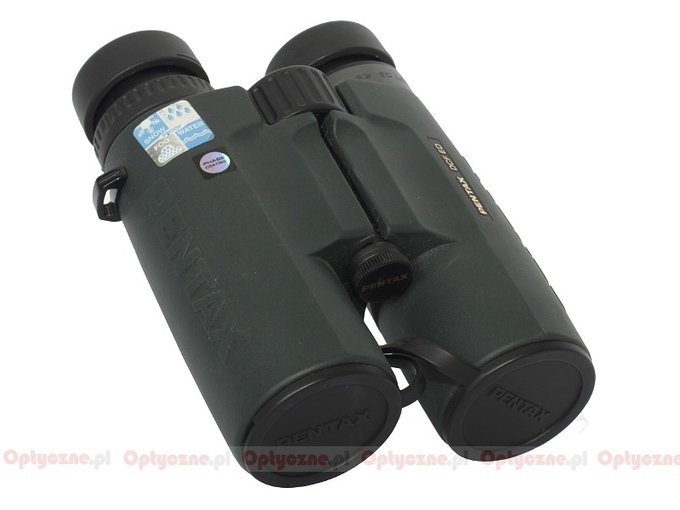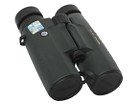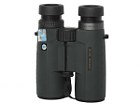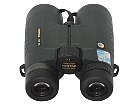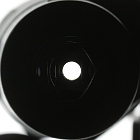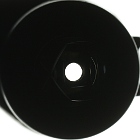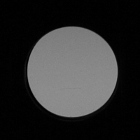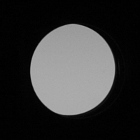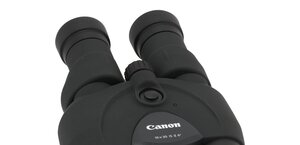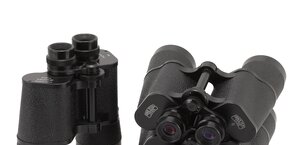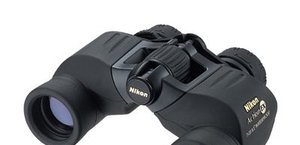Pentax DCF ED 8x43
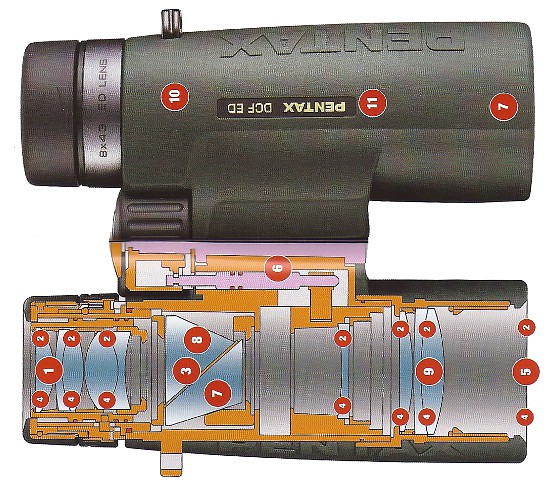 Oprical construction of Pentax 8x43 DCF ED binoculars. Source: Pentax. |
All air-to-glass surfaces are covered by multilayer antireflection coatings. A casing, made of metal, is padded with high quality rubber; it is also nitrogen filled and completely waterproof. Buyers gets both caps, a case and a strap. The binoculars come with a 25-year guarantee period.
| Magnification | Lens diameter | Angular field of view | Prisms | Eye relief | Weight | Price |
|---|---|---|---|---|---|---|
| 8 | 43 | 110/1000(6.3o) | BaK4 | 22 mm | 715 g | 3489 PLN |
Summary
Pros:
- good transmission,
- well-corrected chromatic aberration,
- negligible astigmatism,
- practically invisible coma,
- sharp image in most of the field of view,
- slight brightness loss on the edge of the field of view,
- relatively small, shapely and solid casing for a 43 mm objective,
- minimum focus from 1.55 metres,
- exit pupils visible on a nice, dark background,
- good class of prisms and coatings,
- long warranty period.
Cons:
- not impressive field of view,
- significantly truncated exit pupils.
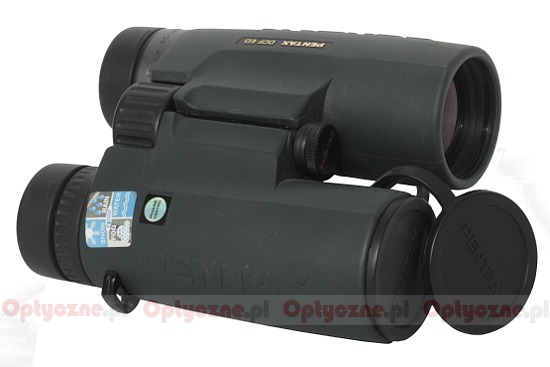 |
Perhaps let’s start with the cons - a narrow field of view, amounting to just 6.3 degrees, should be undoubtedly counted among them. In the 8x42 class of binoculars a field of view of about 6.9-7.0 degrees we consider a comfortable minimum size - then the apparent field of eyepieces is bigger than 55 degrees and you don’t have an impression as if you were looking through a keyhole. Fortunately the Pentax is close to that result because the apparent field of view of its eyepieces is 53 degrees. It is mainly due to the magnification which is closer to the value of 8.4x than the declared 8.0x. That’s why, despite a not very wide total field of view, you can look through these eyepieces and forget about the ‘keyhole’ effect at least for a moment or two.
The second slip-up concerns truncated exit pupils. Whereas the left pupil still fits the norm, because the loss of 1% of light doesn’t hurt a lot, the right pupil, in which you lose almost 9% of light, does a serious damage here. It is a pity – if only the producers took care of a correct shape of exit pupils the Pentax result would get really close to the level presented by such pairs of binoculars as the Leica Ultravid HD.
 |
Let’s stop the carping, though, because you shouldn’t complain too much in the case of an instrument which in our test got a score of over 132 points so very high indeed, at least according to our scale. A smaller field of view is a flaw but it also allows you to correct the said field in a very good or even perfect way. The Pentax took advantage of that opportunity, correcting such aberrations as astigmatism or coma in an exemplary manner. What’s more, the brightness loss or the sharpness on the edge should be praised as well; the chromatic aberration is corrected very well and you shouldn’t have any reservations about the distortion level either. The performance of coatings is good, providing a high transmission level and dampening down flares effectively.
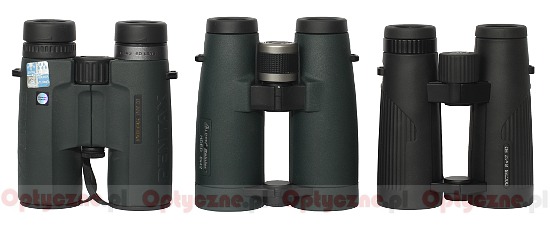 Pentax DCF 8x43 ED, Alpen Rainier HD ED 8x42 and Docter 8x42 ED. |
If you add to that the fact that this pair of binoculars, for its class of objective lenses, is put into a solid, shapely casing, is made in Japan and comes with really good warranty conditions all complaints are nothing more than picking holes.





